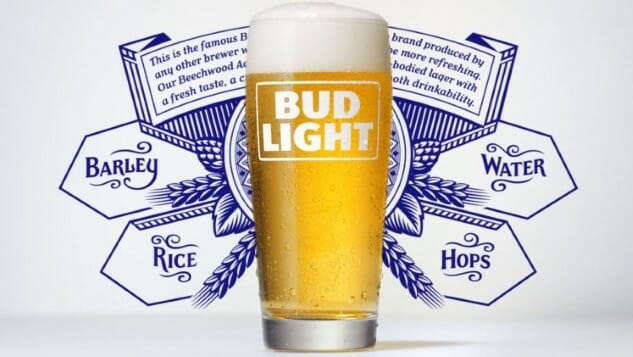Bud Light Is Putting its Nutrition Facts Front and Center with New Packaging
Images via Bud Light
This morning, the folks over at Anheuser-Busch InBev unveiled what is, in all honesty, a pretty bold move. Beginning in February, packages of Bud Light cans will bear a brand new ingredients label, designed in the style of an FDA nutritional info box. After decades of looking the other way when it comes to the conversation of calories or ingredients in beer, the nation’s biggest-selling lager will instead be embracing a degree of transparency, and hoping that it translates to increased sales for the oft-flagging Bud Light brand. Overall Bud Light sales have decreased roughly 17 percent in the last five years.
“In every aspect of their lives, people are demanding more and more transparency,” reads the press release from AB InBev. “Bud light wants beer drinkers to have more information when it comes to choosing their brew, right at their fingertips on the packaging.”
The press release frames this as a progressive move (which it is, overall), but it also sort of smacks of Budweiser seeking press by being the first to make the move. As the AP notes, “the labels aren’t legally required, but major beer makers agreed in 2016 to voluntarily disclose nutrition facts on their products by 2020.” Bud Light will simply be the first major brand to dip a toe into these waters.
-

-

-

-

- Curated Home Page Articles By Test Admin October 21, 2025 | 3:10pm
-

- Curated Home Page Articles By Test Admin October 21, 2025 | 2:57pm
- Urls By Test Admin October 21, 2025 | 2:57pm
- Curated Home Page Articles By Test Admin October 21, 2025 | 2:55pm
-

-

-

-

-

-

-

-

-

-

-

-

-

-

-

-

-

-

-

-

-

-

-

-

-

-

-

-

-

-

-




































